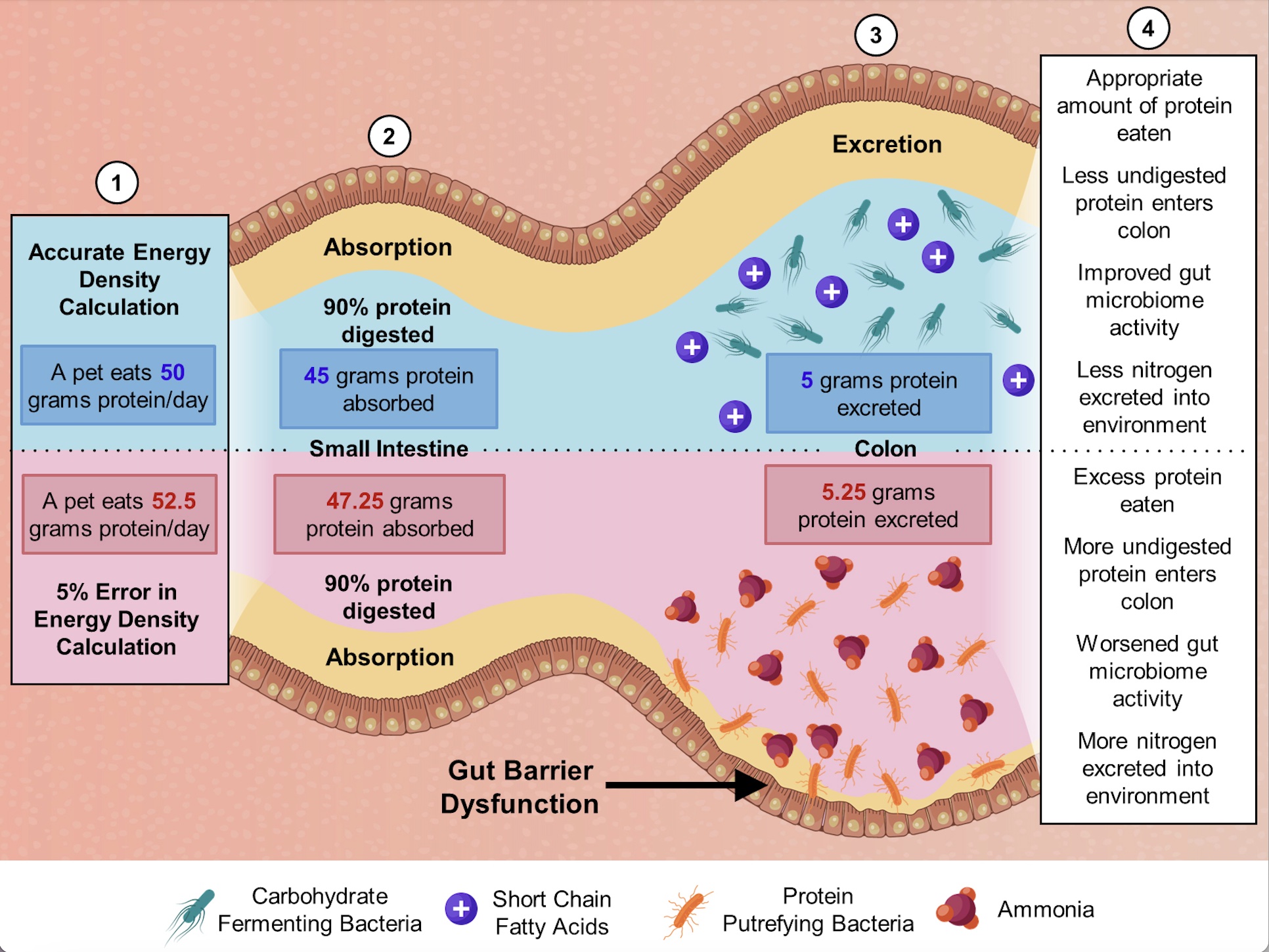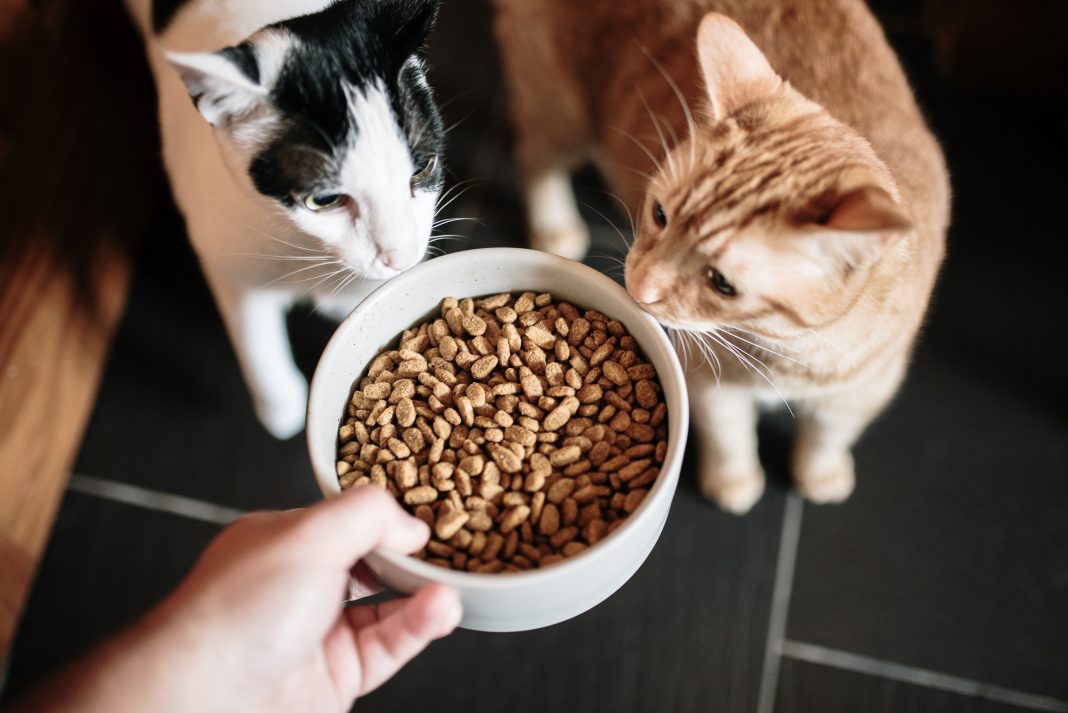Improved nutrient precision in pet foods is critical to pets, people & planet; Dennis E. Jewell, PhD from Kansas State University & Matthew I. Jackson, PhD from Hill’s Pet Nutrition, explain
Pet parents require accurate labeling of the energy content of foods for their dogs and cats to feed them the appropriate amount of nutrition. However, determining the dietary energy present in food is not trivial. The difference between what pets eat and what they excrete is absorbed energy. In practice, only some pet food companies have the resources to assess the energy content in food directly. Alternatively, regulatory agencies such as the American Association of Feed Control Officials (AAFCO) provide equations based on published data for pet food companies to predict food energy levels.
Since energy intake also determines the amount of protein, fat and carbohydrate the pet will consume daily, precise equations are important to ensure that pets get just the right amount of nutrition to maintain overall health and well-being. Feeding the right amount of nutrition to pets is a win-win-win situation for pets, people and the planet to improve pet health, save money for pet parents by avoiding overfeeding and minimize unabsorbed protein nitrogen excreted as feces into the environment.
A recent publication shows how improving the precision of energy density predicting equations benefits pets, people and the planet (1). The pet benefits when all nutrients are balanced with each other and energy density. When the energy density of the food changes, the consumption of other nutrients, like protein, changes with it. The authors show that when the energy density is not accurately predicted, energy and protein intake can increase about 5% above what the pet actually needs. Excess energy and protein intake lead to detrimental impacts on pet health, like obesity and kidney disease, while also burdening the planet with increased nitrogen output from pet feces.

The positive impact of nutrient precision in pet foods
Here we highlight the positive impact of precision nutrient delivery, specifically on protein intake and nitrogen waste production. Protein is composed of amino acids. The right level of protein- derived amino acids is required for pets to maintain health through strong muscles and an optimum immune system. However, digestion and absorption of protein are never 100% complete. Unabsorbed protein is not useful to the pet and is broken down by gut microbes in the colon, producing biochemicals that potentially harm pets and burden the environment (2). This process is called ‘putrefaction’. Overfeeding protein can increase unabsorbed dietary protein and result in more putrefaction. Overfeeding protein is a problem for the planet as well. When pets are fed excess protein, more food ingredients need to be produced than is necessary; this burdens the farms and supply chains that produce animal and vegetable protein ingredients for pet food. Also, if pets are fed too much protein, their feces add an excess nitrogen burden to the environment.
This publication reviews energy prediction equations for precision nutrition that can reduce protein putrefaction and excretion of nitrogen waste into the environment. The lower part of the figure (red) shows the impact of overfeeding protein by 5% when an imprecise energy equation is used. When a more precise prediction equation is used (blue), less protein nitrogen bypasses digestion and arrives at the colon to be putrefied by gut bacteria. This leads to improved gut bacterial activity that emphasizes healthy bacterial metabolites (4). It also leads to less dietary protein-derived nitrogen being excreted in the feces.
A recent Pet Food Ingredient Report documented the scale of use of ingredients for pet food in the U.S. (3). Many of these ingredients serve as a source of protein. Using the scale of use of protein-containing ingredients in the U.S., we predicted the burden on the environment that might occur if an imprecise prediction equation (erroneous by 5%) is used. At first glance, it may seem that 5% is inconsequential, but for each pet, the 5% increase can compound over time with continued exposure to excess protein.
Across the planet, the impact of the number of pets’ eating a 5% overage becomes significant. An analogy might be the recycling of a single aluminium can; while a single can does not make an appreciable difference to the planet, when even a tiny percentage of the total number of aluminium cans are not produced or recycled, the impact on the environment can be large. Therefore, a 5% increased precision for protein nutrition benefits the environment.
The Pet-Food-Ingredient-Report reports that there are 7.7 billion lbs of meat and poultry, rendered protein meals and fishery products used in the U.S. per year. A conservative estimate for the protein content of these ingredients is 50% protein. With a 5% improvement in formulation that would occur by using a more accurate prediction equation developed in the new publication by Jewel and Jackson (1), there would be a reduction in fecal nitrogen waste in the environment of 183 million lbs. At the same time, farms and mills could produce 367 million lbs less of these ingredients. Importantly, excess absorbed protein (Point #2 in Figure) is converted by pets to nitrogen metabolites and excreted in the urine, a further burden on pet metabolism and the environment.
Improved nutrient precision in pet foods summary
In summary, improved nutrient precision in pet foods and better energy equations would prevent Pet Parents from over-delivering protein or energy to pets. It would lead to a reduction of potentially detrimental gut microbe products to help to prevent pet obesity and protect kidney health.
Improved precision in energy equations also facilitates more responsible stewardship of the environmental impact of nitrogen waste. Taken together, the work highlighted here shows how having accurate prediction equations for the energy density of pet food benefits pets, people and the planet.
References
- Jewell D.E. and Jackson M.I., Front. Vet. Sci., 21 February 2023, Sec. Animal Nutrition and Metabolism, Volume 10, (In Press).
- Wernimont SM, et al., The Effects of Nutrition on the Gastrointestinal Microbiome of Cats and Dogs: Impact on Health and Disease. Front Microbiol. 2020 25 June; 11:1266.
- Pet Food Production and Ingredient Analysis; Institute for Feed Education and Research; Accession March 1st, 2023; http://ifeeder.org/wp-content/uploads/200218-Pet- Food-Report.pdf
- Badri DV, et al., Dietary Protein and Carbohydrate Levels Affect the Gut Microbiota and Clinical Assessment in Healthy Adult Cats. J Nutr. 2021 Dec 3;151(12):3637-3650.

This work is licensed under Creative Commons Attribution-NonCommercial-NoDerivatives 4.0 International.


